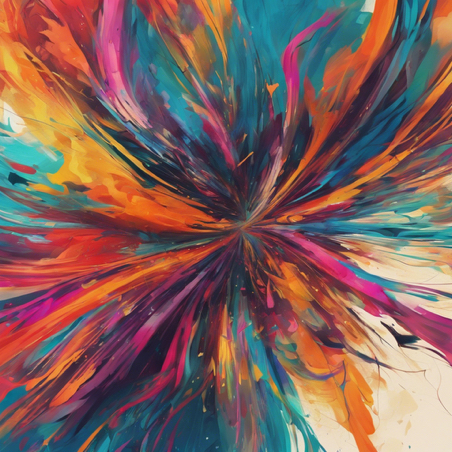In a recent workshop hosted by my dear friend Ali on his WePause platform, I had the privilege of guiding participants through an emotional release technique using drawing. This session centered on the vital importance of processing and releasing emotions in a healthy and constructive manner. In this blog post, I am excited to share the insights and techniques discussed during our exploration. Feel free to check out the recording of the workshop here.
Understanding the Process of Emotion
Before diving into the practice of emotional release through drawing, it’s crucial to grasp the nature of emotions themselves. Emotions initiate as subjective experiences, triggering physiological responses that manifest as feelings. These feelings often prompt behavioral reactions. However, societal norms and expectations can stifle the expression of certain emotions, leading to repression or suppression.
The Consequences of Unprocessed Emotions
When emotions go unprocessed and are suppressed, they accumulate, creating a reservoir of energy within us. This buildup can result in numbness and disconnection, ultimately impacting our overall well-being. Moreover, unprocessed emotions can manifest in negative physical and psychological effects, disrupting the equilibrium of our internal systems.
Techniques for Emotional Processing and Release
To address this challenge, there are various techniques and activities available to facilitate emotional processing and release:
- Breathwork: Utilizing conscious breathing techniques to regulate emotions.
- Journaling: Establishing a safe and honest space to reflect, release, and process thoughts and emotions.
- Artistic Outlet: Engaging in creative endeavors such as drawing, painting, playing music, or singing.
- Movement: Incorporating physical activities like dancing, yoga, exercise, running, walking or even punching pillows to release pent-up emotions.
Structuring the Process
To optimize the efficacy of emotional release, it’s beneficial to follow a structured approach:
- Choosing an Activity: Selecting an activity from the aforementioned list that resonates with you.
- Setting Aside Time: Dedicate uninterrupted time, preferably 30 minutes to an hour, for the emotional release practice.
- Setting Up and Preparing: Ensure you have all necessary materials ready, such as art materials or any other required equipment.
- Meditation and Reflection: Take a few quiet moments to connect with the emotion you want to release and reflect on the specific feelings and sensations that arise in the body with that emotion.
- Letting Emotions Flow: Engage in the chosen activity and allow the emotions to flow through you and the activity you chose without analyzing or judging the outcome. It is important to persist with the activity until reaching a resolution—whether it be a sense of calm or a welcomed exhaustion.
- Journaling: After the practice, journal about your experience, noting any insights or observations that arise.
Putting the Practice into Action
In the workshop, we embarked on a journey of emotional release through drawing. Participants engaged in a brief yet impactful session where I guided them through a meditation to connect with a recent upsetting event and the associated difficult emotions. After the meditation, they were prompted to express these emotions on paper using pens and paper. Throughout the emotional release process, it was emphasized to remain connected to the emotion and practice belly breathing for grounding.

More on the Benefits of Emotional Release through Drawing
Engaging in emotional release through drawing offers numerous benefits for mental and emotional well-being:
- Emotional Catharsis: Drawing provides a means to express and release emotions visually, offering a sense of catharsis and relief.
- Self-Exploration and Insight: Through drawing, we can explore our thoughts, emotions, and experiences, fostering self-awareness and personal growth.
- Stress Reduction: The creative process of drawing reduces stress and promotes relaxation, facilitating a state of calm and tranquility.
- Emotional Regulation: Drawing serves as an outlet for regulating emotions, helping to create balance and harmony within ourselves.
- Empowerment and Resilience: Drawing empowers us to reclaim personal power and build resilience, enabling us to navigate challenges more effectively.
Incorporating Emotional Release into Daily Life
While dedicating specific time for emotional release through drawing is valuable, integrating emotional processing into daily life is equally important:
- Daily Reflection: Dedicate a few minutes each day to reflect on emotions and experiences, using journaling or drawing as tools for self-reflection.
- Mindful Art Breaks: Take short breaks throughout the day to engage in artistic activities, releasing built-up emotions and refreshing the mind.
- Creative Rituals: Establish regular creative rituals involving drawing or other artistic practices to provide ongoing emotional release and self-expression.
In conclusion, emotional release through drawing is a powerful technique that facilitates the processing and release of pent-up emotions in a safe and creative manner. By engaging in activities that resonate with us and following a structured approach, we can nurture emotional well-being and gain deeper insights into ourselves. Remember to honor and embrace your emotions, as they are integral to personal growth and development.
If you have any questions or would like to share your experiences with emotional release techniques, please feel free to reach out. Let’s continue this journey of self-discovery and healing together.



Leave a Reply